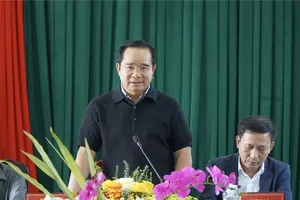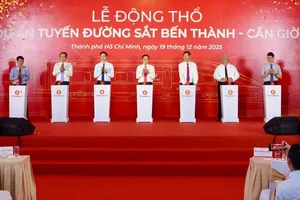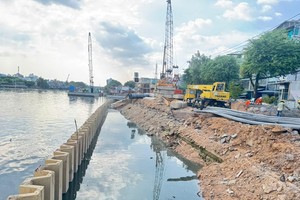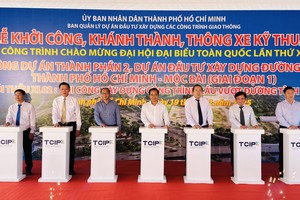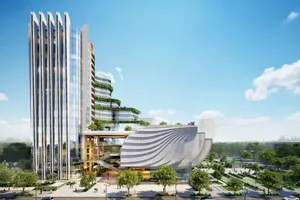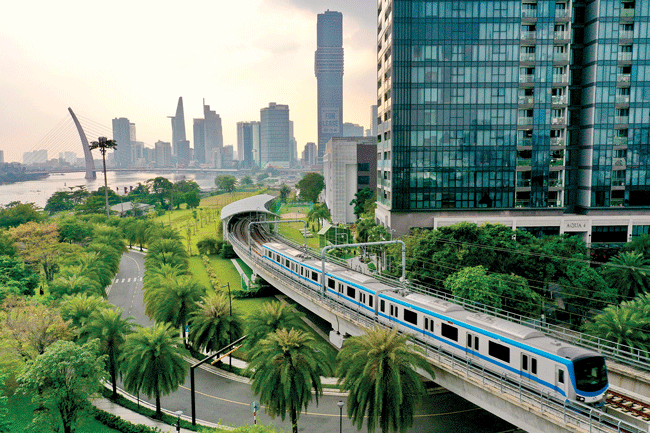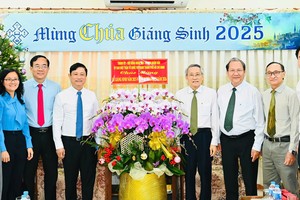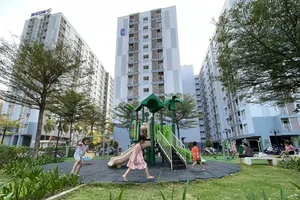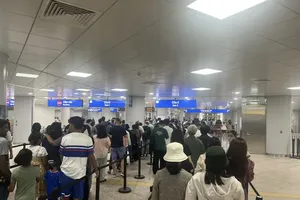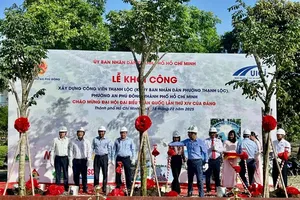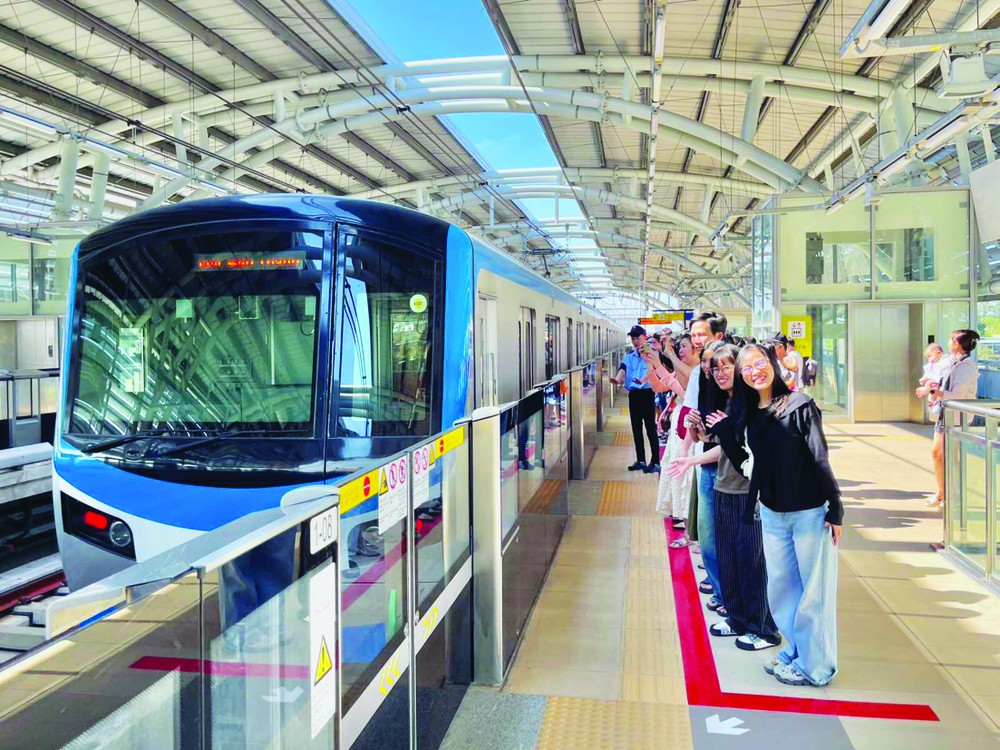
In accordance with the city's 2021-2045 development plan, approved by the Prime Minister, Ho Chi Minh City is committed to the completion of seven urban railway lines, encompassing a total length of approximately 355 kilometers, by the year 2035.
Urban railways are recognized as the cornerstone of Ho Chi Minh City's transportation infrastructure system. The city's 2021-2045 Development Plan, approved by the Prime Minister, outlines an ambitious vision for a comprehensive urban rail network comprising ten lines with a total length of 510 kilometers by 2045.
This network will encompass four lines connecting Binh Chanh and Thu Duc City, with additional lines linking Thu Duc City to Cu Chi District, Hoc Mon District to Nha Be District, and Binh Chanh District to Cu Chi District, along with proposed inner and outer belt routes.
Furthermore, the plan includes the development of two mixed-mode routes such as an LRT/tramway line along the Saigon River from Binh Tan District to Cu Chi District and an LRT/MRT line connecting District 7 to the Can Gio coastal urban area. To further enhance regional connectivity, the national railway network passing through Ho Chi Minh City will undergo significant upgrades.
In accordance with the plan, the Hanoi-Ho Chi Minh City railway line will undergo significant upgrades, including the conversion to a double-track system with a 1.435m gauge. Furthermore, the railway network will be strategically organized with the implementation of radial and through-city rail lines specifically designed to serve the demands of urban passenger transportation.
The city plans to establish six new railway lines to enhance connectivity across various regions and areas. These include a high-speed railway line spanning 14 kilometers along the North-South axis, the Ho Chi Minh City - Can Tho railway line linking the Mekong Delta provinces, and the Ho Chi Minh City - Tay Ninh route aimed at facilitating international trade connections.
Additionally, there will be a railway line from Thu Thiem to Long Thanh to provide access to Long Thanh International Airport, a line connecting Ho Chi Minh City to Loc Ninh to strengthen ties with Cambodia and support the trans-Asian railway network, and a dedicated railway line to Hiep Phuoc Port in Nha Be District.
According to the Ho Chi Minh City Department of Transport, in order to serve the railway lines, Ho Chi Minh City plans to invest in the construction of a series of large-scale stations and depots such as Binh Trieu station, Saigon (Hoa Hung) station, Thu Thiem station, Tan Kien station, Suoi Tien depot, Tham Luong depot, Tan Kien depot.
Director Tran Quang Lam of the Ho Chi Minh City Department of Transport emphasized the city's ambitious goal of completing seven urban railway lines, encompassing a total of 355 kilometers, by the year 2035. This represents a significant expansion of the city's metro network, with an additional 155 kilometers of metro lines slated for construction within the next decade, resulting in a total metro network of 510 kilometers.
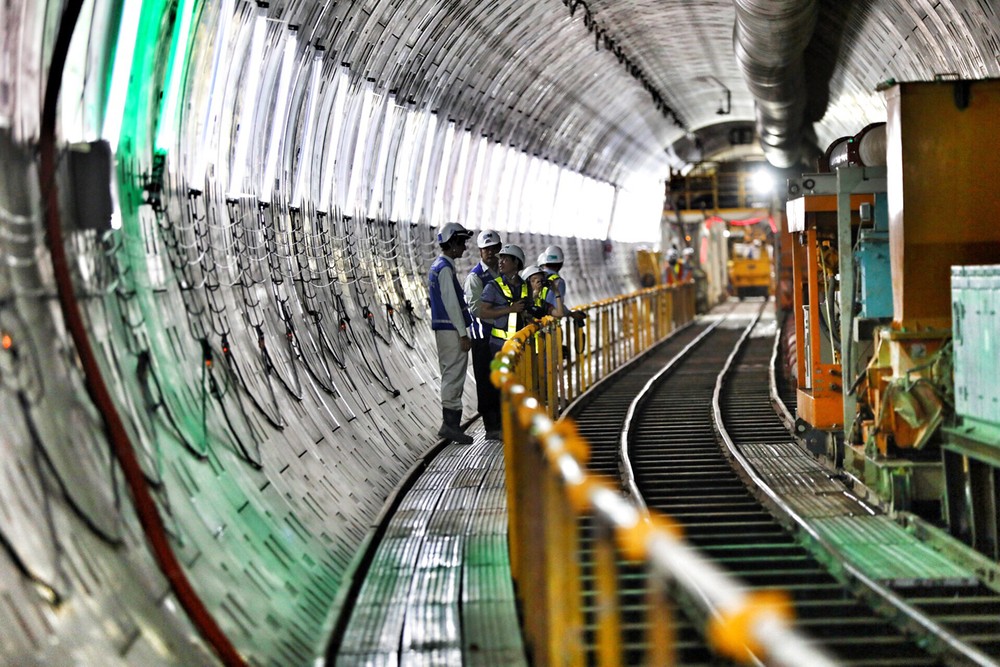
This ambitious plan signifies a 25-fold increase compared to the current Metro Line 1 (Ben Thanh - Suoi Tien), which required over a decade for completion, in the next 20 years. To facilitate the successful implementation of this ambitious plan, the Prime Minister has directed the city to accelerate project timelines, undertake a comprehensive review of existing plans, adopt modern planning and implementation approaches, diversify funding sources, and explore innovative mechanisms and policies to ensure optimal project outcomes, said Director Tran Quang Lam.
He added that the city has proposed a revised plan for its metro network, prioritizing the construction of underground lines to minimize compensation costs and enhance urban aesthetics. This revised plan entails a significant increase in investment, with the total budget now set at US$40 billion for the period leading up to 2035.
This revised investment strategy aims to accelerate the completion of the entire 510-kilometer network by 2045, a significant advancement compared to the previously projected completion date of 2060.
To facilitate the successful execution of this extensive urban rail development initiative, Director Tran Quang Lam presented a detailed framework that includes 43 distinct mechanisms organized into six primary categories: planning, capital mobilization strategies, procedural and implementation authority, land acquisition, technical and technological standards and regulations, as well as management and operations.
The capital source plan identifies public investment as the primary funding source, with intentions to leverage multiple additional sources.
Mr. Tran Quang Lam stated that the implementation plan outlines the 2025-2027 period as a time for investment preparation, followed by compensation, site clearance, and the commencement of construction in 2027-2028.
Additionally, the city has segmented the implementation into two phases; the first phase extends from now until 2035 while the second phase covers the years 2035 to 2045.
